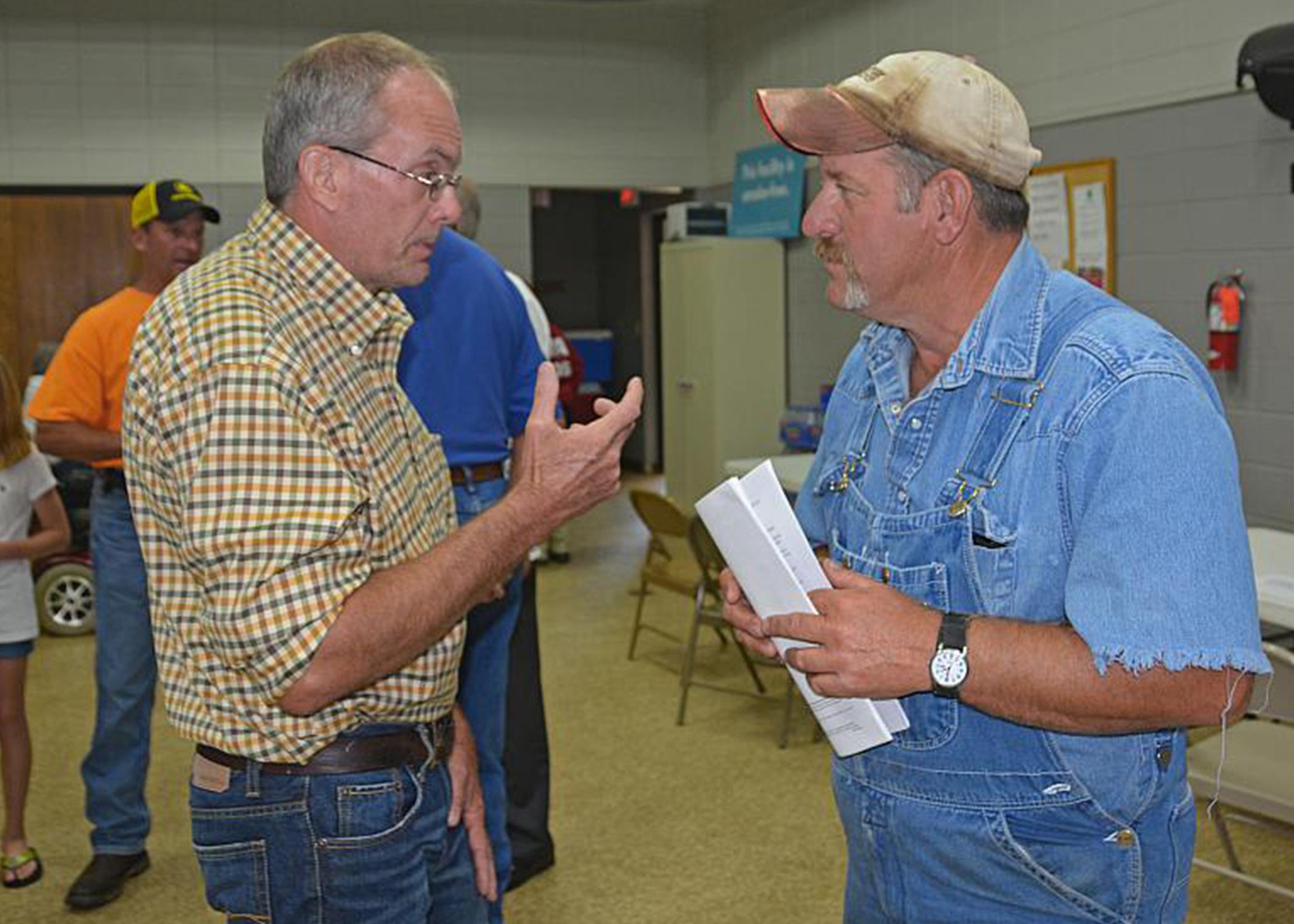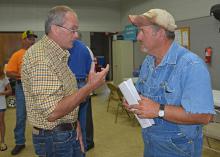Information Possibly Outdated
The information presented on this page was originally released on August 28, 2015. It may not be outdated, but please search our site for more current information. If you plan to quote or reference this information in a publication, please check with the Extension specialist or author before proceeding.
MSU disaster response evolves after Katrina
STARKVILLE, Miss. -- In the aftermath of Hurricane Katrina, Mississippi State University leaders realized the importance of instituting a standardized response system to assist with all types of catastrophes that might strike the state.
Six months after Katrina, the MSU Extension Service Center for Government and Community Development began training university employees, as well as local emergency management officials, 911-call-center operators, and elected and appointed officials.
To date, the center has trained hundreds of MSU faculty and staff members, along with around 20,000 state employees and officials, said Tom Ball, a governmental training officer with the organization.
“The university’s role has always been to provide support to local agencies through the Extension Service’s county offices,” Ball explained. “There has always been a strong effort in the counties to provide support, but, until Katrina, we didn’t have the coordinated effort that we do now.”
Now, the university has preassembled teams of Extension and Mississippi Agricultural and Forestry Experiment Station personnel who have received Incident Command System training. ICS is a standardized incident-management model that helps coordinate the response of government agencies and the private sector during all types of incidents, from natural disasters to planned events.
Extension personnel are integral parts of each county’s state emergency plan, serving in whatever capacity the county needs. Some Extension and Experiment Station employees help with sheltering animals during hurricane evacuations or after floods. They also answer phones or staff donation drop-off locations during relief efforts.
“There is no one way that Extension and the Experiment Station assist,” Ball said. “We just step up and do what the county needs. We can serve in all support functions, from answering questions about row-crop salvage after a natural disaster to setting up temporary child care locations and providing mobile uplinks for communication.”
Extension and Experiment Station personnel who want to volunteer during any type of event throughout the state have been trained in ICS. Each of the four Research and Extension Center regions has two assessment teams and two work-relief teams. Assessment teams include as many as 10 people, and work-relief teams include 10 to 20 people.
One set of assessment and work-relief teams in each region provides agriculture-related assistance. The other set of teams is trained to work in shelters opened for disaster victims. Personnel train and practice for emergencies constantly.
Teams have responded many times in the decade since Katrina: the Tupelo and Smithville tornadoes, the Greenville flooding, and, most recently, the Louisville tornado.
Winston County was heavily hit in 2014 with 61 poultry houses destroyed or severely damaged and many cattle and timber producers battered. This impact prompted Winston County Emergency Management Director Buddy King to ask Extension personnel to help assemble the first Agriculture Disaster Recovery Center at the Louisville-based MSU Extension county office.
The office served as a centralized headquarters for representatives from the Mississippi Board of Animal Health, Natural Resources Conservation Service, Farm Service Agency, U.S. Department of Agriculture Rural Development Administration, Federal Emergency Management Agency, Mississippi Department of Agriculture and Commerce, Mississippi Cattlemen’s Association, MSU Extension Service, Mississippi Farm Bureau Federation, Mississippi Forestry Commission and Mississippi Poultry Association to help people seeking information and assistance for everything from injured animals to downed fences.
“We wanted to get everyone in one room to provide the most help in the shortest amount of time,” said Anne Howard Hilbun, a governmental training officer with the Center for Government and Community Development. “Having all the assisting agencies in one place made everything more organized and convenient to the producers and landowners who were affected.”
In four hours, disaster recovery center served more than 70 individuals. It was the first time a center of this kind had been developed in the state or nation, Hilbun said.
Hilbun wrote a publication to help other counties and states organize Agriculture Disaster Recovery Centers. Extension Publication 2885, “Agriculture Disaster Recovery Centers: A Guide for Understanding and Coordinating Agriculture Needs After Disasters,” has been submitted to the Federal Emergency Management Agency and made available for use by others across the country.





